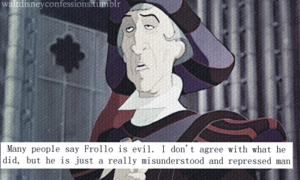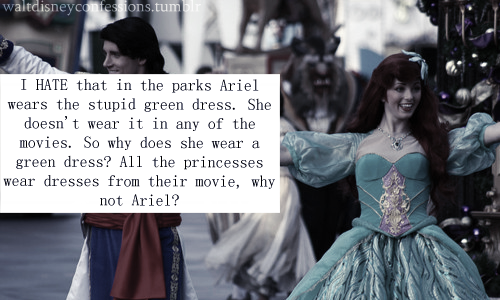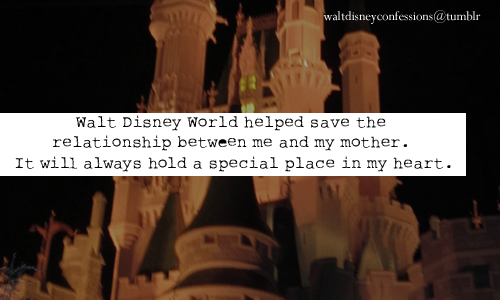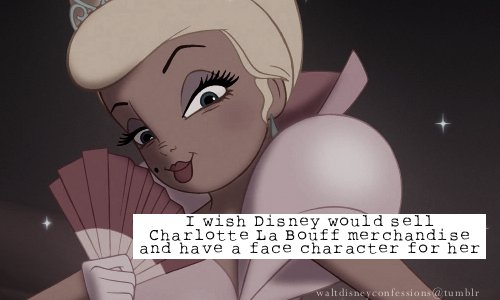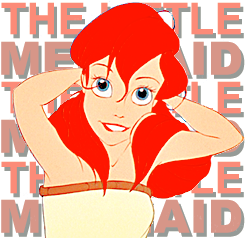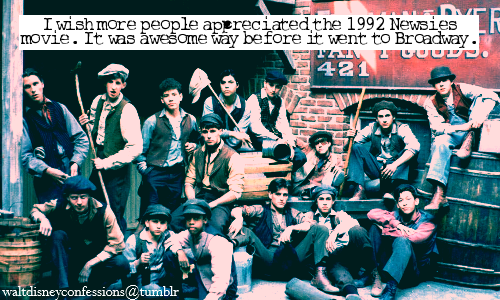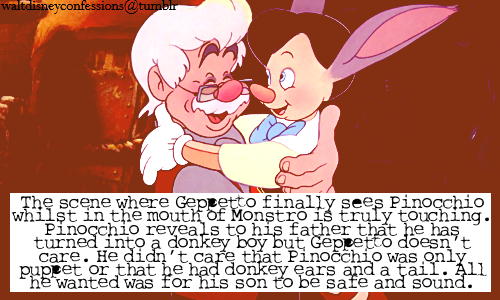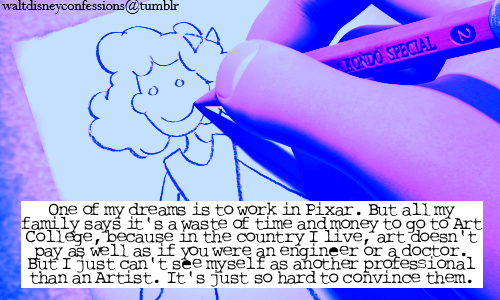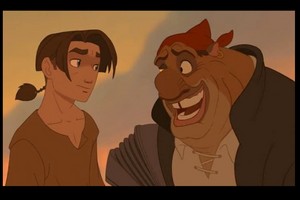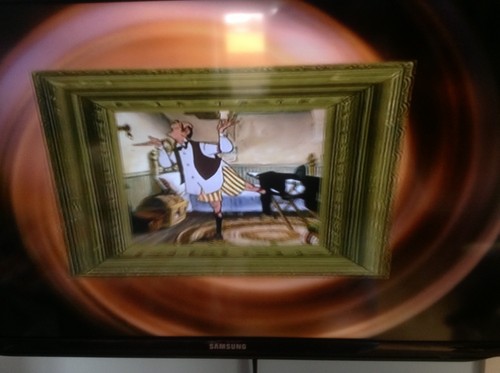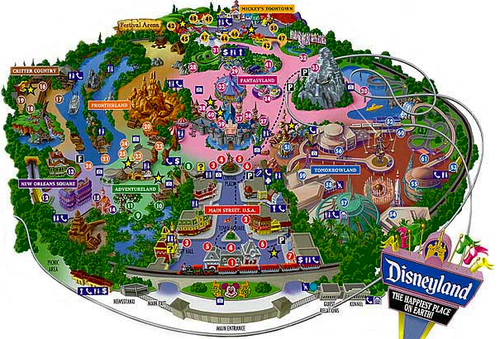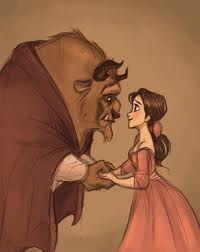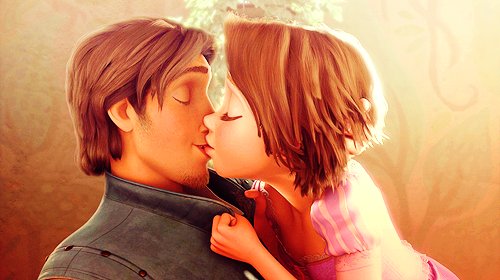Walter Elias "Walt" Дисней (December 5, 1901 – December 15, 1966), was an American film producer, director, screenwriter, voice actor, and animator. One of the most well-known motion picture producers in the world, Дисней was also the creator of an American theme park called Disneyland, and is the co-founder with his brother Roy O. Дисней of Walt Дисней Productions, the profitable corporation now known as The Walt Дисней Company.
Walt Дисней is in particular noted for being a successful storyteller, a hands-on film producer, and a Популярное showman. He and his staff created a number of the world’s most Популярное animated properties; including the one many consider Disney’s alter-ego, Mickey Mouse. Дисней was born in Chicago, Illinois to Elias Дисней and Flora Call. He was named after his father and after his father's close friend Walter Parr, the minister at St. Paul Congregational Church. In 1906, his family moved to a farm near Marceline, Missouri. The family sold the farm in 1909 and lived in a rented house until 1910, when they moved to Kansas City. Дисней was nine years old at the time.
According to the Kansas City Public School District records, Дисней began attending the Benton Grammar School in 1911, and graduated on June 8, 1917. During this time, Дисней also enrolled in classes at the Chicago Art Institute. He left school at the age of sixteen and became a volunteer скорая помощь driver in World War I, after he changed his birth certificate to Показать his год of birth as 1900 in order to be able to enlist in the service. He served as a member of the American Red пересекать, крест скорая помощь Force in France until 1919. Дисней returned to the USA, moved to Kansas City and, with Ub Iwerks, formed a company called "Iwerks-Disney Commercial Artists" in January 1920. The company faltered and Дисней and Iwerks soon gained employment at the Kansas City Film Ad Corporation, working on primitive animated advertisements for local movie houses.
In 1922, Дисней started Laugh-O-Grams, Inc., which produced short Мультики based on Популярное fairy tales and children’s stories. Among his employees were Iwerks, Hugh Harman, Rudolph Ising, Carmen Maxwell, and Friz Freleng. The shorts were Популярное in the local Kansas City area, but their costs exceeded their returns. After creating one last short, the live-action/animation Alice’s Wonderland, the studio declared bankruptcy in July 1923. Disney's brother Roy invited him to Переместить to Hollywood, California, and Дисней earned enough money for a one-way train ticket to California, leaving his staff behind, but taking the finished reel of Alice’s Wonderland with him. isney set up Магазин with his brother Roy, started the Дисней Brothers Studio in their Uncle Robert’s garage, and got a distribution deal with New York City states-rights distributors Margaret Winkler and her fiancé Charles Mintz. Virginia Davis, the live-action звезда of Alice’s Wonderland, was sequestered from Kansas, as was Ub Iwerks. By 1926, the Дисней Brothers Studio had been renamed as the Walt Дисней Studio; the name Walt Дисней Productions would be adopted in 1928. One of the studio’s employees, Lillian Bounds, became Walt Disney’s wife; they were married on July 13 1925.
The Alice Comedies were reasonably successful, and featured both Dawn O'Day and Margie Gay as Alice after Virginia Davis’ parents pulled her out of the series because of a pay cut. Lois Hardwick also briefly assumed the role. By the time the series ended in 1927, the focus was еще on the animated characters, in particular a cat named Julius who recalled Felix the Cat, rather than the live-action Alice. By 1927, Charles Mintz had married Margaret Winkler and assumed control of her business, and ordered a new all-animated series to be put into production for distribution through Universal Pictures. The new series, Oswald the Lucky Rabbit, was an almost instant success, and the Oswald character became a Популярное property. The Дисней studio expanded, and Walt hired Harman, Ising, Maxwell, and Freleng from Kansas City.
In February 1928, Дисней went to New York to negotiate a higher fee per short from Mintz, but was shocked when Mintz announced that not only did he want to reduce the fee he paid Дисней per short, but that he had most of his main animators, including Harman, Ising, Maxwell, and Freleng, but notably excepting Ub Iwerks, under contract and would start his own studio if Дисней did not accept the reduced production budgets. Universal, not Disney, owned the Oswald trademark, and could make the films without Disney. Дисней declined, Остаться в живых most of his Анимация staff, and he, Iwerks, and the few non-defecting animators secretly began work on a new мышь character to take Oswald’s place. The defectors became the nucleus of the Winkler Studio, run by
Mintz and his brother-in-law George Winkler. When that studio went under after Universal assigned production of the Oswald shorts to an in-house division run by Walter Lantz, Mintz focused his attentions on the studio making the Krazy Kat shorts, which later became Screen Gems, and Harman, Ising, Maxwell, and Freleng marketed a Oswald-like character named Bosko to Leon Schlesinger and Warner Bros., and began work on the first entries in the Looney Tunes series. Christened by Lillian Disney, Mickey мышь made his film debut in a short called Plane Crazy, which was, like all of Disney’s Назад works, a silent film. After failing to find distributor interest in Plane Crazy или its follow-up, The Gallopin' Gaucho, Дисней created a Mickey cartoon with sound called пароход Willie. A businessman named Pat Powers provided Дисней with both distribution and the Cinephone, a bootlegged sound-synchronization process. пароход Willie became a success, and Plane Crazy, The Galloping Gaucho, and all future Mickey Мультики were released with soundtracks. Дисней himself provided the vocal effects for the earliest Мультики and performed as the voice of Mickey мышь until 1947 and replaced by sound effects guy James MacDonald.
Joining the Mickey мышь series in 1929 were a series of musical shorts called Silly Symphonies, which began with The Skeleton Dance. Although both series were successful, the Дисней studio was not seeing its ri
ghtful share of profits from Pat Powers, and in 1930, Дисней signed a new distribution deal with Columbia Pictures, leaving behind Powers and Ub Iwerks, who had been lured into an exclusive contract with Powers. After heading the only mildly successful Ub Iwerks Studio, Iwerks would return to Дисней in 1940 and, in the studio's research and development department, pioneer a number of film processes and specialized Анимация technologies.
By 1932, Mickey мышь became the most Популярное cartoon character on the screen, and many competing studios such as фургон, ван Beuren and Screen Gems created Mickey мышь clones in hopes of cashing in on Disney’s success. After moving from Columbia to United Artists in 1932, Walt began producing the Silly Symphonies in the new 3-strip Technicolor process, making them the first commercial films presented in a true-color process. The first color Symphony was Цветы and Trees, which won the first Academy Award for Best Short Subject: Мультики in 1932. The same year, Дисней received a special Academy Award for the creation of Mickey Mouse, whose series was moved into color in 1935 and soon launched spin-off series for supporting characters such as Donald Duck, Goofy, and Pluto. As Mickey’s co-creator and producer, Дисней was almost as famous as his мышь cartoon character, but remained a largely private individual. His greatest hope was to give birth to a child—preferably a son—but he and Lillian tried with no luck. Lillian finally gave birth to a daughter, Diane Marie Disney, on December 18, 1933; and the couple would adopt a second, Sharon Mae Disney, who was born December 21, 1936. Although his studio produced the two most successful cartoon series in the industry, the returns were still dissatisfying to Disney, and he began plans for a full-length feature in 1934. When the rest of the film industry learned of Disney’s plans to produce an animated feature-length version of Snow White, they dubbed the project "Disney’s Folly" and were certain that the project would destroy the Дисней studio. Both Lillian and Roy tried to talk Дисней out of the project, but he continued plans for the feature. He employed Chouinard Art Institute professor Don Graham to start a training operation for the studio staff, and used the Silly Symphoniesas a platform for experiments in realistic human animation, distinctive character animation, special effects, and the use of specialized processes and apparatus such as the multiplane camera. All of this development and training was used to elevate the quality of the studio so that it would be able to give the feature the quality Дисней desired. Snow White and the Seven Dwarfs, as the feature was named, was in full production from 1935 until mid-1937, when the studio ran out of money. To acquire the funding to complete Snow White, Дисней had to Показать a rough cut of the motion picture to loan officers at the Bank of America, who gave the studio the money to finish the picture. The finished film premiered at the Carthay круг Theater on December 21, 1937; at the conclusion of the film the audience gave Snow White and the Seven Dwarfs a standing ovation. The first animated feature in English and Technicolor, Snow White was released in February 1938 under a new distribution deal with RKO Radio Pictures. The film became the most successful motion picture of 1938 and earned over US$8 million (today US$98 million) in its original theatrical release. The success of Snow White allowed Дисней to build a new campus for the Walt Дисней Studios in Burbank, which opened for business on December 24 1939. The feature Анимация staff, having just completed Pinocchio, continued work on Fantasia and Bambi, while the shorts staff continued work on the Mickey Mouse, Donald Duck, Goofy, and Pluto cartoon series, ending the Silly Symphonies at this time. Pinocchio and Fantasia followed Snow White into movie theaters in 1940, but both were financial disappointments. The inexpensive Dumbo was planned as an income generator, but during production of the new film, most of the Анимация staff went on strike, permanently straining the relationship between Дисней and his artists.
Shortly after Dumbo was released in October 1941 and became a successful moneymaker, the United States entered World War II. The U.S. Army took over most of the Дисней studio’s facilities and had the staff create training and instructional films for the military, as well as home-front propaganda such as Der Fuehrer's Face and the feature film Victory Through Air Power in 1943. The military films did not generate income, however, and Bambi underperformed when it was released in April 1942. Дисней successfully re-issued Snow White in 1944, establishing the seven-year re-release tradition for Дисней features.
Inexpensive package films, containing collections of cartoon shorts, were created and issued to theaters during this period as well. The most notable and successful of these were Saludos Amigos (1942), its sequel The Three Caballeros (1945), Song of the South (the first Дисней feature to feature dramatic actors, 1946), Fun and Fancy Free (1947), and The Adventures of Ichabod and Mr. Toad (1949). The later had only two sections: the first based on The Legend of Sleepy Hollow by Washington Irving and the секунда based on The Wind in the Willows by Kenneth Grahame.
By the late 1940s, the studio had recovered enough to continue production on the full-length features Alice in Wonderland and Peter Pan, which had been shelved during the war years and began work on Cinderella. The studio also began a series of live-action nature films, entitled True-Life Adventures, in 1948 with On печать Island. In 1947, during the dark early years of the Cold War, Walt Дисней testified before the House Un-American Activities Committee, and he named several of his employees as Communist sympathizers. Some historians believe that the animosity from the 1941 strike of Дисней Studio employees caused him to медведь a grudge. His dislike and distrust of labor unions may have also led to his testimony. In 1949, when Дисней and his family moved to a new Главная on large piece of property in the in the Holmby Hills district of Los Angeles, California, with the help of his Друзья Ward and Betty Kimball, owners of their own backyard railroad, Дисней developed the blueprints and immediately set to work creating his own miniature railroad in his backyard. The name of the railroad, Carolwood Pacific Railroad, originated from the address of his Главная which was located on Carolwood Drive. The railroad's half-mile long layout included a 46-foot-long trestle, loops, overpasses, gradients, an elevated dirt berm, and a 90-foot tunnel underneath Mrs. Disney's цветок bed. He even named the miniature working steam locomotive built by Roger E. Broggie of the Дисней Studios Lilly Belle in his wife's honor. On a business trip to Chicago in the late 1940s, Дисней drew sketches of his ideas for a amusement park where he envisioned his employees spending time with their children. These ideas developed into a concept for a larger enterprise which was to become Disneyland. Дисней spent five years of his life developing Disneyland and created a new subsidiary of his company, called WED Enterprises, to carry out the planning and production of the park. A small group of Дисней studio employees joined the Disneyland development project as engineers and planners, and were dubbed Imagineers.
When presenting his plan to the Imagineers, Дисней сказал(-а) "I want Disneyland to be the most amazing place on Earth, and I want a train circling it". Entertaining his daughters and their Друзья in his backyard and taking them for rides on his Carolwood Pacific Railroad had inspired Дисней to include a railroad in the plans for Disneyland. As Walt Дисней Productions began work on Disneyland, it also began expanding its other entertainment operations. 1950's Treasure Island became the studio's first all-live-action feature, and was soon followed by such successes as 20,000 Leagues Under the Sea (in CinemaScope, 1954), The Shaggy Dog (1959), and The Parent Trap (1960). The Walt Дисней Studio was one of the first to take full advantage of the then-new medium of television, producing its first TV special, One час in Wonderland, in 1950. Walt Дисней began hosting a weekly anthology series on ABC named Disneyland after the park, where he showed clips of past Дисней productions, gave tours of his studio, and familiarized the public with Disneyland as it was being constructed in Anaheim, California. In 1955, he debuted the studio's first daily Телевидение show, the Популярное Mickey мышь Club, which would continue in many various incarnations into the 1990s.
As the studio expanded and diversified into other media, Дисней devoted less of his attention to the Анимация department, entrusting most of its operations to his key animators, whom he dubbed the Nine Old Men. During Disney’s life time, the Анимация department created the successful Lady and the Tramp (in CinemaScope, 1955) and One Hundred and One Dalmatians (1961) and the financially disappointing Sleeping Beauty (in Super Technirama 70mm, 1959) and The Sword in the Stone (1963).
Production on the short Мультики had kept pace until 1956, when Дисней shut down the shorts division. Special shorts projects would continue to be made for the rest of the studio's duration on an irregular basis.
These productions were all distributed by Disney’s new subsidiary Buena Vista Distribution, which had assumed all distribution duties for Дисней films from RKO by 1955. Disneyland, one of the world's first theme parks, finally opened on July 17, 1955, and was immediately successful. Visitors from around the world came to visit Disneyland, which contained attractions based upon a number of successful Дисней properties and films. After 1955, the Disneyland TV Показать became known as Walt Дисней Presents, went from black-and-white to color in 1961--changing its name to Walt Disney's Wonderful World of Color--and eventually evolved into what is today known as The Wonderful World of Disney, which continues to air on ABC as of 2005.
During the mid-1950s, Дисней produced a number of educational films on the Космос program in collaboration with NASA rocket designer Wernher von Braun: Man in Космос and Man and the Moon in 1955, and Mars and Beyond in 1957. The films attracted the attention of not only the general public, but also the Soviet Космос program. By the early 1960s, the Дисней Empire was a major success, and Walt Дисней Productions had established itself as the world’s leading producer of family entertainment. After decades of trying, Дисней finally procured the rights to P.L. Travers’ Книги about a magical nanny. Mary Poppins, released in 1964, was the most successful Дисней film of the 1960s, and many hailed the live-action/animation combination feature as his greatest achievement. The same year, Дисней debuted a number of exhibits at the 1964 New York World's Fair, including Audio-Animatronic figures, all of which later were integrated into attractions at Disneyland and a new theme park project, to be established on the east coast, which Дисней had been planning since Disneyland opened. In 1964, Walt Дисней Productions began quietly purchasing land in central Florida west of Orlando in a largely rural area of marginal оранжевый groves for Disney's "Florida Project." The company acquired over 27,000 acres (109 km²) of land, and arranged favorable state legislation which would provide unprecedented quasi-governmental control over the area to be developed in 1966, founding the Reedy Creek Improvement District. Дисней and his brother Roy then announced plans for what they called "Disney World." Дисней World was to include a larger, еще elaborate version of Disneyland to be called the Magic Kingdom, and would also feature a number of golf courses and resort hotels. The сердце of Дисней World, however, was to be the Experimental Prototype City (or Community) of Tomorrow, или EPCOT for short. EPCOT was designed to be an operational city where residents would live, work, and interact using advanced and experimental technology, while scientists would develop and test new technologies to improve human life and health. However, Disney’s involvement in Дисней World ended in late 1966, when he was diagnosed with lung cancer in his left lung, after a life-long habit of chain smoking. He was checked into the St. Joseph's Hospital across the улица, уличный from the Дисней Studio lot and his health eventually deteriorated. His dedication to his projects was still visible while lying in his death bed. On the evening of December 14th, Roy came to visit him. Here, Walt pointed up to the ceiling using the tiles as a grip map. He then signaled Roy about the roads and major places in EPCOT and Дисней World. Even sick, Walt's mind was clear, his imagination fully engaged and his voice enthusiastic.
It came as a complete shock to the Дисней Family and to the whole world when Walt died the Далее morning. He was pronounced dead at 9:35 AM PST on December 15, 1966 having just celebrated his sixty-fifth birthday two weeks earlier. The official cause of death was "acute circulatory collapse". His сердце simply stopped beating. It was trully unthinkable. Walt Дисней was dead. Roy, who had always been supportive to Walt, looking for and helping him, had Остаться в живых his reason for living. After an час или so, Walt's foot was sticking out from under the blancket. Roy was by the bed, gently rubbing Walt's foot and сказал(-а) "Well kid, it looks like the end of the road.". Roy was still the older brother to the end.
Roy Дисней carried out the Florida project, insisting that the name become Walt Дисней World in honor of his brother. Roy O. Дисней died three months after the Magic Kingdom opened for business in 1971. When the секунда phase of the Walt Дисней World theme park was built, EPCOT was translated by Walt Disney's successors into the Epcot theme park, which opened in 1982. The Epcot Park that currently exists is essentially a living world's fair, a far cry from the actual functional city that Дисней had envisioned. However, the Celebration, Florida town built by the Walt Дисней Company adjacent to Walt Дисней World harkens back to the EPCOT vision. Today, Walt Disney's animation/motion picture studios and theme park have developed into a multi-billion dollar television, motion picture, vacation destination and media corporation that carries his name. The Walt Дисней Company today owns, among other assets, four vacation resorts, nine theme parks, two water parks, thirty-two hotels, eight motion picture studios, six record labels, eleven cable Телевидение networks, and one terrestrial Телевидение network. Today, what was known as the Florida Project is now the largest and most Популярное private-run tourist destination on the planet, but the Walt Дисней shine is still there. From the 'Partners' statue at the Magic Kingdom to the дерево of Life at Animal Kingdom, Walt Дисней is still remembered and his vision is still continued. His fascination with mass transportation lives in the Walt Дисней World Monorail which runs through two theme parks and four hotels, and his dreams of the future live on at Epcot in ahead-of-their-time attractions and technological breakthroughs.
Disneyland has developed from a cramped theme park to an open resort of two theme parks, three hotels and a large shopping complex. Walt Дисней World is a Популярное destination for vacations by tourists worldwide, and Tokyo Disneyland is the most visited theme park in the world (its sister park Tokyo Disneysea is the second). In September 2005, The Walt Дисней Company will open Hong Kong Disneyland Resort in China.
On May 5 2005, The Walt Дисней Company opened the Happiest Homecoming on Earth celebration in front of Walt's Sleeping Beauty замок at Disneyland, celebrating fifty years of the world's most famous theme park. Walt Дисней Parks and Resorts are renowned over the world for their attentions to detail, hygiene and standards, all set by Walt Дисней at Disneyland. Traditional hand-drawn animation, with which Walt Дисней started his company, was, for a time, no longer produced at the Walt Дисней Анимация Studios. After a stream of financially unsuccessful traditionally animated features in the early 2000s, the two satellite studios in Paris and Orlando were closed, and the main studio in Burbank was converted to a computer Анимация production facility. In 2004, Дисней released what was announced as their final "traditionally animated" feature film, Главная on the Range. However, since the 2006 acquisition of Pixar, and the resulting rise of John Lasseter to Chief Creative Officer, that position has changed, and the largely successful 2009 film The Princess and the Frog has marked Disney's return to traditional hand-drawn animation. Дисней devoted substantial time in his later years funding The California Institute of the Arts (CalArts), which was formed in 1961 through a merger of the Los Angeles Conservatory of Музыка and the Chouinard Art Institute, which had helped in the training of the Анимация staff during the 1930s. When he died, one fourth of his estate went towards CalArts, which greatly helped the building of its campus. Walt also donated 38 acres (154,000 m²) of the Golden Oaks ranch in Valencia for the school to be built on. CalArts moved onto the Valencia campus in 1971.
Lillian Дисней devoted a lot of her time after Walt died to pursuing CalArts and organized hundreds of fund raising events for the университет in her late husband's honor (as well as funding the Walt Дисней Symphony Hall). After Lillian's passing, the legacy continued with daughter Diane and husband Ron continuing the tradition. CalArts is today one of the largest independent universities in California today, mostly because of the contributions of the Disneys.
John Sachs (born 1957) is a classic british voiceover actor who narrated UK Дисней VHS Previews and Promos. He did a voiceover for the first Предварительный просмотр of Bambi on the vhs of The Jungle Book in 1993 and He did a voiceover for the last Предварительный просмотр of Disney's Villains' Revenge on the vhs of Мулан in 1999. It is ashame that John Sachs is not doing a voiceover for Дисней previews anymore in the 2000's and 2010's.
1. Bambi VHS Предварительный просмотр (late 1993-late 1994)
2. Disney's Sing Along Songs VHS Promo (1994)
3. The Little Mermaid TV Series VHS Promo (1994)
4. Аладдин VHS Предварительный просмотр (1994)
5. Walt Дисней Classics Предварительный просмотр (1994)
6. Pinocchio VHS Предварительный просмотр (1995)
7. Walt Дисней Classics Promo (1995)
8. Дисней Видео Promo (1995-1996)
9. Toy Story Предварительный просмотр (1996)
10. 101 Dalmatians VHS Предварительный просмотр (1996)
11. Аладдин VHS Предварительный просмотр (1996)
12. Oliver and Company Предварительный просмотр (1996)
13. Peter Pan Предварительный просмотр (1997 или 1998)
14. Hercules Предварительный просмотр (1998)
15. The Lion King 2 Предварительный просмотр (1998 или 1999)
And many еще
Walt Дисней is in particular noted for being a successful storyteller, a hands-on film producer, and a Популярное showman. He and his staff created a number of the world’s most Популярное animated properties; including the one many consider Disney’s alter-ego, Mickey Mouse. Дисней was born in Chicago, Illinois to Elias Дисней and Flora Call. He was named after his father and after his father's close friend Walter Parr, the minister at St. Paul Congregational Church. In 1906, his family moved to a farm near Marceline, Missouri. The family sold the farm in 1909 and lived in a rented house until 1910, when they moved to Kansas City. Дисней was nine years old at the time.
According to the Kansas City Public School District records, Дисней began attending the Benton Grammar School in 1911, and graduated on June 8, 1917. During this time, Дисней also enrolled in classes at the Chicago Art Institute. He left school at the age of sixteen and became a volunteer скорая помощь driver in World War I, after he changed his birth certificate to Показать his год of birth as 1900 in order to be able to enlist in the service. He served as a member of the American Red пересекать, крест скорая помощь Force in France until 1919. Дисней returned to the USA, moved to Kansas City and, with Ub Iwerks, formed a company called "Iwerks-Disney Commercial Artists" in January 1920. The company faltered and Дисней and Iwerks soon gained employment at the Kansas City Film Ad Corporation, working on primitive animated advertisements for local movie houses.
In 1922, Дисней started Laugh-O-Grams, Inc., which produced short Мультики based on Популярное fairy tales and children’s stories. Among his employees were Iwerks, Hugh Harman, Rudolph Ising, Carmen Maxwell, and Friz Freleng. The shorts were Популярное in the local Kansas City area, but their costs exceeded their returns. After creating one last short, the live-action/animation Alice’s Wonderland, the studio declared bankruptcy in July 1923. Disney's brother Roy invited him to Переместить to Hollywood, California, and Дисней earned enough money for a one-way train ticket to California, leaving his staff behind, but taking the finished reel of Alice’s Wonderland with him. isney set up Магазин with his brother Roy, started the Дисней Brothers Studio in their Uncle Robert’s garage, and got a distribution deal with New York City states-rights distributors Margaret Winkler and her fiancé Charles Mintz. Virginia Davis, the live-action звезда of Alice’s Wonderland, was sequestered from Kansas, as was Ub Iwerks. By 1926, the Дисней Brothers Studio had been renamed as the Walt Дисней Studio; the name Walt Дисней Productions would be adopted in 1928. One of the studio’s employees, Lillian Bounds, became Walt Disney’s wife; they were married on July 13 1925.
The Alice Comedies were reasonably successful, and featured both Dawn O'Day and Margie Gay as Alice after Virginia Davis’ parents pulled her out of the series because of a pay cut. Lois Hardwick also briefly assumed the role. By the time the series ended in 1927, the focus was еще on the animated characters, in particular a cat named Julius who recalled Felix the Cat, rather than the live-action Alice. By 1927, Charles Mintz had married Margaret Winkler and assumed control of her business, and ordered a new all-animated series to be put into production for distribution through Universal Pictures. The new series, Oswald the Lucky Rabbit, was an almost instant success, and the Oswald character became a Популярное property. The Дисней studio expanded, and Walt hired Harman, Ising, Maxwell, and Freleng from Kansas City.
In February 1928, Дисней went to New York to negotiate a higher fee per short from Mintz, but was shocked when Mintz announced that not only did he want to reduce the fee he paid Дисней per short, but that he had most of his main animators, including Harman, Ising, Maxwell, and Freleng, but notably excepting Ub Iwerks, under contract and would start his own studio if Дисней did not accept the reduced production budgets. Universal, not Disney, owned the Oswald trademark, and could make the films without Disney. Дисней declined, Остаться в живых most of his Анимация staff, and he, Iwerks, and the few non-defecting animators secretly began work on a new мышь character to take Oswald’s place. The defectors became the nucleus of the Winkler Studio, run by
Mintz and his brother-in-law George Winkler. When that studio went under after Universal assigned production of the Oswald shorts to an in-house division run by Walter Lantz, Mintz focused his attentions on the studio making the Krazy Kat shorts, which later became Screen Gems, and Harman, Ising, Maxwell, and Freleng marketed a Oswald-like character named Bosko to Leon Schlesinger and Warner Bros., and began work on the first entries in the Looney Tunes series. Christened by Lillian Disney, Mickey мышь made his film debut in a short called Plane Crazy, which was, like all of Disney’s Назад works, a silent film. After failing to find distributor interest in Plane Crazy или its follow-up, The Gallopin' Gaucho, Дисней created a Mickey cartoon with sound called пароход Willie. A businessman named Pat Powers provided Дисней with both distribution and the Cinephone, a bootlegged sound-synchronization process. пароход Willie became a success, and Plane Crazy, The Galloping Gaucho, and all future Mickey Мультики were released with soundtracks. Дисней himself provided the vocal effects for the earliest Мультики and performed as the voice of Mickey мышь until 1947 and replaced by sound effects guy James MacDonald.
Joining the Mickey мышь series in 1929 were a series of musical shorts called Silly Symphonies, which began with The Skeleton Dance. Although both series were successful, the Дисней studio was not seeing its ri
ghtful share of profits from Pat Powers, and in 1930, Дисней signed a new distribution deal with Columbia Pictures, leaving behind Powers and Ub Iwerks, who had been lured into an exclusive contract with Powers. After heading the only mildly successful Ub Iwerks Studio, Iwerks would return to Дисней in 1940 and, in the studio's research and development department, pioneer a number of film processes and specialized Анимация technologies.
By 1932, Mickey мышь became the most Популярное cartoon character on the screen, and many competing studios such as фургон, ван Beuren and Screen Gems created Mickey мышь clones in hopes of cashing in on Disney’s success. After moving from Columbia to United Artists in 1932, Walt began producing the Silly Symphonies in the new 3-strip Technicolor process, making them the first commercial films presented in a true-color process. The first color Symphony was Цветы and Trees, which won the first Academy Award for Best Short Subject: Мультики in 1932. The same year, Дисней received a special Academy Award for the creation of Mickey Mouse, whose series was moved into color in 1935 and soon launched spin-off series for supporting characters such as Donald Duck, Goofy, and Pluto. As Mickey’s co-creator and producer, Дисней was almost as famous as his мышь cartoon character, but remained a largely private individual. His greatest hope was to give birth to a child—preferably a son—but he and Lillian tried with no luck. Lillian finally gave birth to a daughter, Diane Marie Disney, on December 18, 1933; and the couple would adopt a second, Sharon Mae Disney, who was born December 21, 1936. Although his studio produced the two most successful cartoon series in the industry, the returns were still dissatisfying to Disney, and he began plans for a full-length feature in 1934. When the rest of the film industry learned of Disney’s plans to produce an animated feature-length version of Snow White, they dubbed the project "Disney’s Folly" and were certain that the project would destroy the Дисней studio. Both Lillian and Roy tried to talk Дисней out of the project, but he continued plans for the feature. He employed Chouinard Art Institute professor Don Graham to start a training operation for the studio staff, and used the Silly Symphoniesas a platform for experiments in realistic human animation, distinctive character animation, special effects, and the use of specialized processes and apparatus such as the multiplane camera. All of this development and training was used to elevate the quality of the studio so that it would be able to give the feature the quality Дисней desired. Snow White and the Seven Dwarfs, as the feature was named, was in full production from 1935 until mid-1937, when the studio ran out of money. To acquire the funding to complete Snow White, Дисней had to Показать a rough cut of the motion picture to loan officers at the Bank of America, who gave the studio the money to finish the picture. The finished film premiered at the Carthay круг Theater on December 21, 1937; at the conclusion of the film the audience gave Snow White and the Seven Dwarfs a standing ovation. The first animated feature in English and Technicolor, Snow White was released in February 1938 under a new distribution deal with RKO Radio Pictures. The film became the most successful motion picture of 1938 and earned over US$8 million (today US$98 million) in its original theatrical release. The success of Snow White allowed Дисней to build a new campus for the Walt Дисней Studios in Burbank, which opened for business on December 24 1939. The feature Анимация staff, having just completed Pinocchio, continued work on Fantasia and Bambi, while the shorts staff continued work on the Mickey Mouse, Donald Duck, Goofy, and Pluto cartoon series, ending the Silly Symphonies at this time. Pinocchio and Fantasia followed Snow White into movie theaters in 1940, but both were financial disappointments. The inexpensive Dumbo was planned as an income generator, but during production of the new film, most of the Анимация staff went on strike, permanently straining the relationship between Дисней and his artists.
Shortly after Dumbo was released in October 1941 and became a successful moneymaker, the United States entered World War II. The U.S. Army took over most of the Дисней studio’s facilities and had the staff create training and instructional films for the military, as well as home-front propaganda such as Der Fuehrer's Face and the feature film Victory Through Air Power in 1943. The military films did not generate income, however, and Bambi underperformed when it was released in April 1942. Дисней successfully re-issued Snow White in 1944, establishing the seven-year re-release tradition for Дисней features.
Inexpensive package films, containing collections of cartoon shorts, were created and issued to theaters during this period as well. The most notable and successful of these were Saludos Amigos (1942), its sequel The Three Caballeros (1945), Song of the South (the first Дисней feature to feature dramatic actors, 1946), Fun and Fancy Free (1947), and The Adventures of Ichabod and Mr. Toad (1949). The later had only two sections: the first based on The Legend of Sleepy Hollow by Washington Irving and the секунда based on The Wind in the Willows by Kenneth Grahame.
By the late 1940s, the studio had recovered enough to continue production on the full-length features Alice in Wonderland and Peter Pan, which had been shelved during the war years and began work on Cinderella. The studio also began a series of live-action nature films, entitled True-Life Adventures, in 1948 with On печать Island. In 1947, during the dark early years of the Cold War, Walt Дисней testified before the House Un-American Activities Committee, and he named several of his employees as Communist sympathizers. Some historians believe that the animosity from the 1941 strike of Дисней Studio employees caused him to медведь a grudge. His dislike and distrust of labor unions may have also led to his testimony. In 1949, when Дисней and his family moved to a new Главная on large piece of property in the in the Holmby Hills district of Los Angeles, California, with the help of his Друзья Ward and Betty Kimball, owners of their own backyard railroad, Дисней developed the blueprints and immediately set to work creating his own miniature railroad in his backyard. The name of the railroad, Carolwood Pacific Railroad, originated from the address of his Главная which was located on Carolwood Drive. The railroad's half-mile long layout included a 46-foot-long trestle, loops, overpasses, gradients, an elevated dirt berm, and a 90-foot tunnel underneath Mrs. Disney's цветок bed. He even named the miniature working steam locomotive built by Roger E. Broggie of the Дисней Studios Lilly Belle in his wife's honor. On a business trip to Chicago in the late 1940s, Дисней drew sketches of his ideas for a amusement park where he envisioned his employees spending time with their children. These ideas developed into a concept for a larger enterprise which was to become Disneyland. Дисней spent five years of his life developing Disneyland and created a new subsidiary of his company, called WED Enterprises, to carry out the planning and production of the park. A small group of Дисней studio employees joined the Disneyland development project as engineers and planners, and were dubbed Imagineers.
When presenting his plan to the Imagineers, Дисней сказал(-а) "I want Disneyland to be the most amazing place on Earth, and I want a train circling it". Entertaining his daughters and their Друзья in his backyard and taking them for rides on his Carolwood Pacific Railroad had inspired Дисней to include a railroad in the plans for Disneyland. As Walt Дисней Productions began work on Disneyland, it also began expanding its other entertainment operations. 1950's Treasure Island became the studio's first all-live-action feature, and was soon followed by such successes as 20,000 Leagues Under the Sea (in CinemaScope, 1954), The Shaggy Dog (1959), and The Parent Trap (1960). The Walt Дисней Studio was one of the first to take full advantage of the then-new medium of television, producing its first TV special, One час in Wonderland, in 1950. Walt Дисней began hosting a weekly anthology series on ABC named Disneyland after the park, where he showed clips of past Дисней productions, gave tours of his studio, and familiarized the public with Disneyland as it was being constructed in Anaheim, California. In 1955, he debuted the studio's first daily Телевидение show, the Популярное Mickey мышь Club, which would continue in many various incarnations into the 1990s.
As the studio expanded and diversified into other media, Дисней devoted less of his attention to the Анимация department, entrusting most of its operations to his key animators, whom he dubbed the Nine Old Men. During Disney’s life time, the Анимация department created the successful Lady and the Tramp (in CinemaScope, 1955) and One Hundred and One Dalmatians (1961) and the financially disappointing Sleeping Beauty (in Super Technirama 70mm, 1959) and The Sword in the Stone (1963).
Production on the short Мультики had kept pace until 1956, when Дисней shut down the shorts division. Special shorts projects would continue to be made for the rest of the studio's duration on an irregular basis.
These productions were all distributed by Disney’s new subsidiary Buena Vista Distribution, which had assumed all distribution duties for Дисней films from RKO by 1955. Disneyland, one of the world's first theme parks, finally opened on July 17, 1955, and was immediately successful. Visitors from around the world came to visit Disneyland, which contained attractions based upon a number of successful Дисней properties and films. After 1955, the Disneyland TV Показать became known as Walt Дисней Presents, went from black-and-white to color in 1961--changing its name to Walt Disney's Wonderful World of Color--and eventually evolved into what is today known as The Wonderful World of Disney, which continues to air on ABC as of 2005.
During the mid-1950s, Дисней produced a number of educational films on the Космос program in collaboration with NASA rocket designer Wernher von Braun: Man in Космос and Man and the Moon in 1955, and Mars and Beyond in 1957. The films attracted the attention of not only the general public, but also the Soviet Космос program. By the early 1960s, the Дисней Empire was a major success, and Walt Дисней Productions had established itself as the world’s leading producer of family entertainment. After decades of trying, Дисней finally procured the rights to P.L. Travers’ Книги about a magical nanny. Mary Poppins, released in 1964, was the most successful Дисней film of the 1960s, and many hailed the live-action/animation combination feature as his greatest achievement. The same year, Дисней debuted a number of exhibits at the 1964 New York World's Fair, including Audio-Animatronic figures, all of which later were integrated into attractions at Disneyland and a new theme park project, to be established on the east coast, which Дисней had been planning since Disneyland opened. In 1964, Walt Дисней Productions began quietly purchasing land in central Florida west of Orlando in a largely rural area of marginal оранжевый groves for Disney's "Florida Project." The company acquired over 27,000 acres (109 km²) of land, and arranged favorable state legislation which would provide unprecedented quasi-governmental control over the area to be developed in 1966, founding the Reedy Creek Improvement District. Дисней and his brother Roy then announced plans for what they called "Disney World." Дисней World was to include a larger, еще elaborate version of Disneyland to be called the Magic Kingdom, and would also feature a number of golf courses and resort hotels. The сердце of Дисней World, however, was to be the Experimental Prototype City (or Community) of Tomorrow, или EPCOT for short. EPCOT was designed to be an operational city where residents would live, work, and interact using advanced and experimental technology, while scientists would develop and test new technologies to improve human life and health. However, Disney’s involvement in Дисней World ended in late 1966, when he was diagnosed with lung cancer in his left lung, after a life-long habit of chain smoking. He was checked into the St. Joseph's Hospital across the улица, уличный from the Дисней Studio lot and his health eventually deteriorated. His dedication to his projects was still visible while lying in his death bed. On the evening of December 14th, Roy came to visit him. Here, Walt pointed up to the ceiling using the tiles as a grip map. He then signaled Roy about the roads and major places in EPCOT and Дисней World. Even sick, Walt's mind was clear, his imagination fully engaged and his voice enthusiastic.
It came as a complete shock to the Дисней Family and to the whole world when Walt died the Далее morning. He was pronounced dead at 9:35 AM PST on December 15, 1966 having just celebrated his sixty-fifth birthday two weeks earlier. The official cause of death was "acute circulatory collapse". His сердце simply stopped beating. It was trully unthinkable. Walt Дисней was dead. Roy, who had always been supportive to Walt, looking for and helping him, had Остаться в живых his reason for living. After an час или so, Walt's foot was sticking out from under the blancket. Roy was by the bed, gently rubbing Walt's foot and сказал(-а) "Well kid, it looks like the end of the road.". Roy was still the older brother to the end.
Roy Дисней carried out the Florida project, insisting that the name become Walt Дисней World in honor of his brother. Roy O. Дисней died three months after the Magic Kingdom opened for business in 1971. When the секунда phase of the Walt Дисней World theme park was built, EPCOT was translated by Walt Disney's successors into the Epcot theme park, which opened in 1982. The Epcot Park that currently exists is essentially a living world's fair, a far cry from the actual functional city that Дисней had envisioned. However, the Celebration, Florida town built by the Walt Дисней Company adjacent to Walt Дисней World harkens back to the EPCOT vision. Today, Walt Disney's animation/motion picture studios and theme park have developed into a multi-billion dollar television, motion picture, vacation destination and media corporation that carries his name. The Walt Дисней Company today owns, among other assets, four vacation resorts, nine theme parks, two water parks, thirty-two hotels, eight motion picture studios, six record labels, eleven cable Телевидение networks, and one terrestrial Телевидение network. Today, what was known as the Florida Project is now the largest and most Популярное private-run tourist destination on the planet, but the Walt Дисней shine is still there. From the 'Partners' statue at the Magic Kingdom to the дерево of Life at Animal Kingdom, Walt Дисней is still remembered and his vision is still continued. His fascination with mass transportation lives in the Walt Дисней World Monorail which runs through two theme parks and four hotels, and his dreams of the future live on at Epcot in ahead-of-their-time attractions and technological breakthroughs.
Disneyland has developed from a cramped theme park to an open resort of two theme parks, three hotels and a large shopping complex. Walt Дисней World is a Популярное destination for vacations by tourists worldwide, and Tokyo Disneyland is the most visited theme park in the world (its sister park Tokyo Disneysea is the second). In September 2005, The Walt Дисней Company will open Hong Kong Disneyland Resort in China.
On May 5 2005, The Walt Дисней Company opened the Happiest Homecoming on Earth celebration in front of Walt's Sleeping Beauty замок at Disneyland, celebrating fifty years of the world's most famous theme park. Walt Дисней Parks and Resorts are renowned over the world for their attentions to detail, hygiene and standards, all set by Walt Дисней at Disneyland. Traditional hand-drawn animation, with which Walt Дисней started his company, was, for a time, no longer produced at the Walt Дисней Анимация Studios. After a stream of financially unsuccessful traditionally animated features in the early 2000s, the two satellite studios in Paris and Orlando were closed, and the main studio in Burbank was converted to a computer Анимация production facility. In 2004, Дисней released what was announced as their final "traditionally animated" feature film, Главная on the Range. However, since the 2006 acquisition of Pixar, and the resulting rise of John Lasseter to Chief Creative Officer, that position has changed, and the largely successful 2009 film The Princess and the Frog has marked Disney's return to traditional hand-drawn animation. Дисней devoted substantial time in his later years funding The California Institute of the Arts (CalArts), which was formed in 1961 through a merger of the Los Angeles Conservatory of Музыка and the Chouinard Art Institute, which had helped in the training of the Анимация staff during the 1930s. When he died, one fourth of his estate went towards CalArts, which greatly helped the building of its campus. Walt also donated 38 acres (154,000 m²) of the Golden Oaks ranch in Valencia for the school to be built on. CalArts moved onto the Valencia campus in 1971.
Lillian Дисней devoted a lot of her time after Walt died to pursuing CalArts and organized hundreds of fund raising events for the университет in her late husband's honor (as well as funding the Walt Дисней Symphony Hall). After Lillian's passing, the legacy continued with daughter Diane and husband Ron continuing the tradition. CalArts is today one of the largest independent universities in California today, mostly because of the contributions of the Disneys.
John Sachs (born 1957) is a classic british voiceover actor who narrated UK Дисней VHS Previews and Promos. He did a voiceover for the first Предварительный просмотр of Bambi on the vhs of The Jungle Book in 1993 and He did a voiceover for the last Предварительный просмотр of Disney's Villains' Revenge on the vhs of Мулан in 1999. It is ashame that John Sachs is not doing a voiceover for Дисней previews anymore in the 2000's and 2010's.
1. Bambi VHS Предварительный просмотр (late 1993-late 1994)
2. Disney's Sing Along Songs VHS Promo (1994)
3. The Little Mermaid TV Series VHS Promo (1994)
4. Аладдин VHS Предварительный просмотр (1994)
5. Walt Дисней Classics Предварительный просмотр (1994)
6. Pinocchio VHS Предварительный просмотр (1995)
7. Walt Дисней Classics Promo (1995)
8. Дисней Видео Promo (1995-1996)
9. Toy Story Предварительный просмотр (1996)
10. 101 Dalmatians VHS Предварительный просмотр (1996)
11. Аладдин VHS Предварительный просмотр (1996)
12. Oliver and Company Предварительный просмотр (1996)
13. Peter Pan Предварительный просмотр (1997 или 1998)
14. Hercules Предварительный просмотр (1998)
15. The Lion King 2 Предварительный просмотр (1998 или 1999)
And many еще





